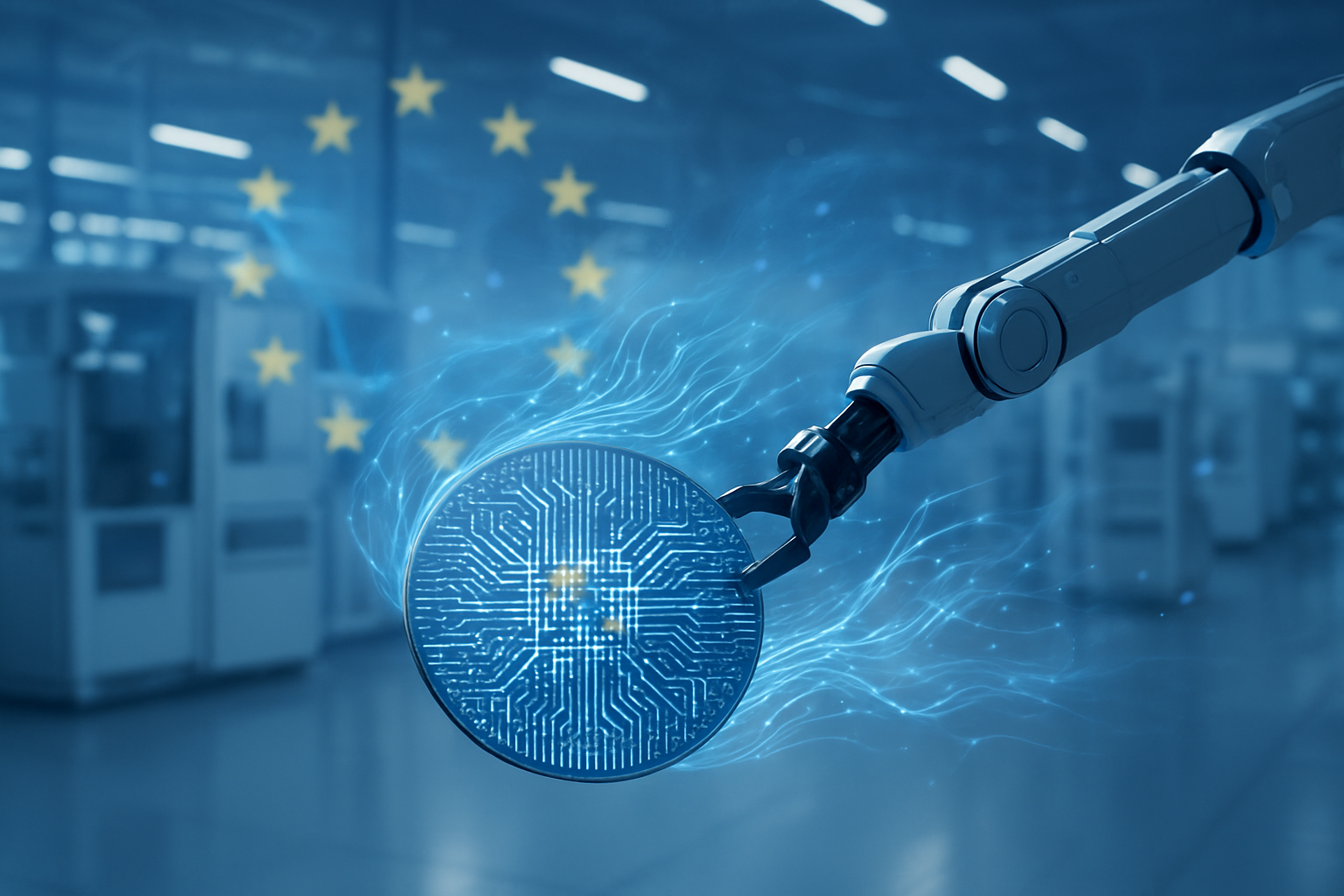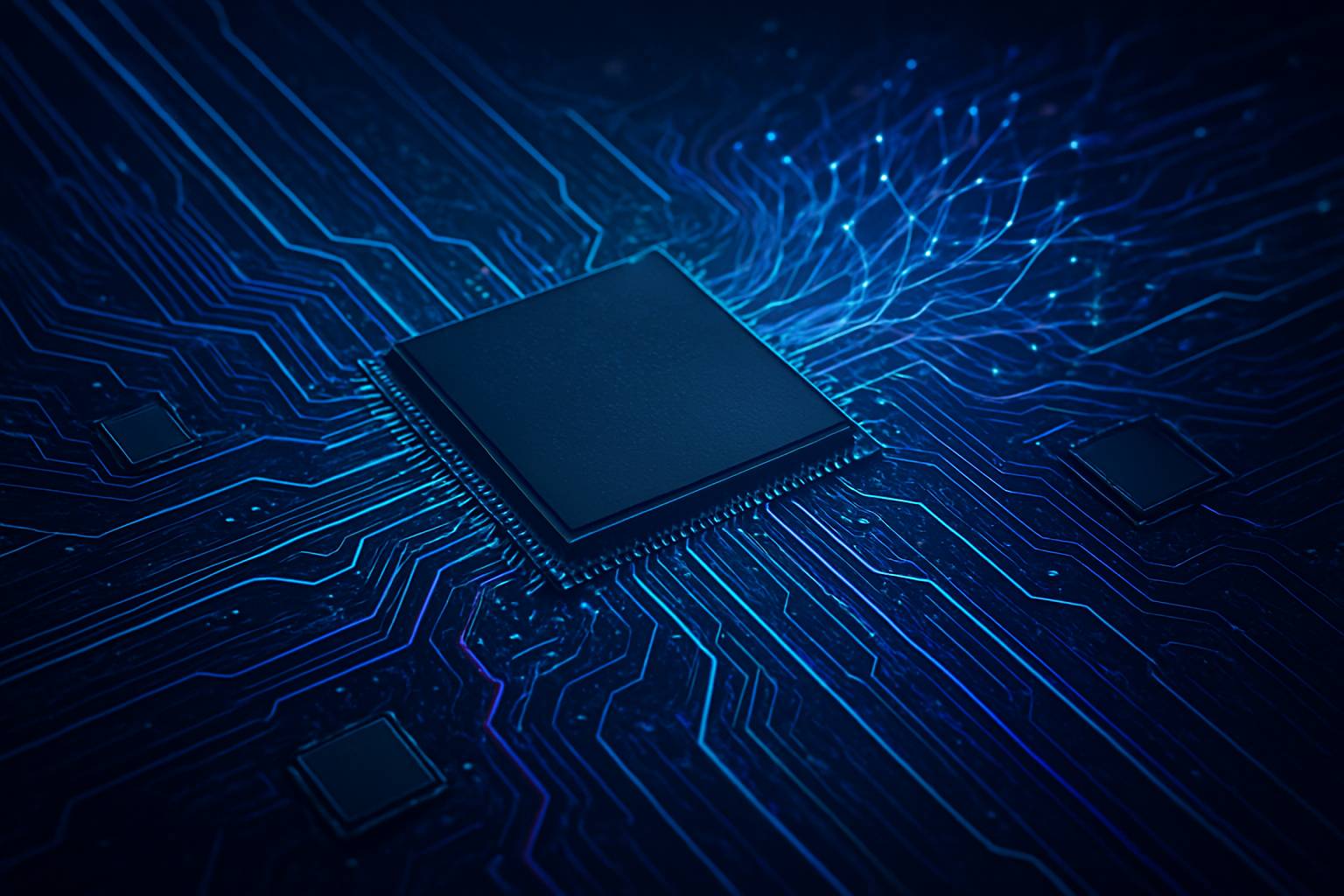The European Union's ambitious semiconductor strategy, driven by the EU Chips Act, is gaining significant momentum, aiming to double the continent's global market share in chips to 20% by 2030. A cornerstone of this strategic push is the substantial €1.1 billion investment by GlobalFoundries (NASDAQ: GFS) to expand its manufacturing capabilities in Dresden, Germany. This move, announced as Project SPRINT, is poised to dramatically enhance Europe's production capacity and bolster its quest for technological sovereignty in a fiercely competitive global landscape. As of October 2025, this investment underscores Europe's determined effort to secure its digital future and reduce critical dependencies in an era defined by geopolitical chip rivalries and an insatiable demand for AI-enabling hardware.
Engineering Europe's Chip Future: GlobalFoundries' Technical Prowess in Dresden
GlobalFoundries' €1.1 billion expansion of its Dresden facility, often referred to as "Project SPRINT," is not merely an increase in capacity; it's a strategic enhancement of Europe's differentiated semiconductor manufacturing capabilities. This investment is set to make the Dresden site the largest of its kind in Europe by the end of 2028, with a projected annual production capacity exceeding one million wafers. Since 2009, GlobalFoundries has poured over €10 billion into its Dresden operations, cementing its role as a vital hub within "Silicon Saxony."
The expanded facility will primarily focus on highly differentiated technologies across various mature process nodes, including 55nm, 40nm, 28nm, and notably, the 22nm 22FDX® (Fully Depleted Silicon-on-Insulator) platform. This 22FDX® technology is purpose-built for connected intelligence at the edge, offering ultra-low power consumption (as low as 0.4V with adaptive body-biasing, achieving up to 60% lower power at the same frequency), high performance (up to 50% higher performance and 70% less power compared to other planar CMOS technologies), and robust integration. It enables full System-on-Chip (SoC) integration of digital, analog, high-performance RF, power management, and non-volatile memory (eNVM) onto a single die, effectively combining up to five chips into one. Crucially, the 22FDX platform is qualified for Automotive Grade 1 and 2 applications, with temperature resistance up to 150°C, vital for the durability and safety of vehicle electronics.
This strategic focus on feature-rich, differentiated technologies sets GlobalFoundries apart from the race for sub-10nm nodes dominated by Asian foundries. Instead, Dresden will churn out essential chips for critical applications such as automotive advanced driver assistance systems (ADAS), Internet of Things (IoT) devices, defense systems requiring stringent security, and essential components for the burgeoning field of physical AI. Furthermore, the investment supports innovation in next-generation compute architectures and quantum technologies, including the manufacturing of control chips for quantum computers and core quantum components like single-photon sources and detectors using standard CMOS processes. A key upgrade involves offering "end-to-end European processes and data flows for critical semiconductor security requirements," directly contributing to a more independent and secure digital future for the continent.
Reshaping the Tech Landscape: Impact on AI Companies, Tech Giants, and Startups
The European Semiconductor Strategy and GlobalFoundries' Dresden investment are poised to significantly reshape the competitive landscape for AI companies, tech giants, and startups operating within or engaging with Europe. The overarching goal of achieving technological sovereignty translates into tangible benefits and strategic shifts across the industry.
European AI companies, particularly those specializing in embedded AI, neuromorphic computing, and physical AI applications, stand to benefit immensely. Localized production of specialized chips with low power, embedded secure memory, and robust connectivity will provide more secure and potentially faster access to critical components, reducing reliance on volatile external supply chains. Deep-tech startups like SpiNNcloud, based in Dresden and focused on neuromorphic computing, have already indicated that increased local capacity will accelerate the commercialization of their brain-inspired AI solutions. The "Chips for Europe Initiative" further supports these innovators through design platforms, pilot lines, and competence centers, fostering an environment ripe for AI hardware development.
For major tech giants, both European and international, the impact is multifaceted. Companies with substantial European automotive operations, such as Infineon (ETR: IFX), NXP (NASDAQ: NXPI), and major car manufacturers like Volkswagen (FWB: VOW), BMW (FWB: BMW), and Mercedes-Benz (FWB: MBG), will gain from enhanced supply chain resilience and reduced exposure to geopolitical shocks. The emphasis on "end-to-end European processes and data flows for semiconductor security" also opens doors for strategic partnerships with tech firms prioritizing data and IP security. While GlobalFoundries' focus is not on the most advanced GPUs for large language models (LLMs) dominated by companies like NVIDIA (NASDAQ: NVDA) and AMD (NASDAQ: AMD), its specialized output complements the broader AI ecosystem, supporting the hardware foundation for Europe's ambitious plan to deploy 15 AI factories by 2026. This move encourages dual sourcing and diversification, subtly altering traditional sourcing strategies for global players.
The potential for disruption lies in the development of more sophisticated, secure, and energy-efficient edge AI products and IoT devices by European companies leveraging these locally produced chips. This could challenge existing offerings that rely on less optimized, general-purpose components. Furthermore, the "Made in Europe" label for semiconductors could become a significant market advantage in highly regulated sectors like automotive and defense, where trust, security, and supply reliability are paramount. The strategy reinforces Europe's existing strengths in equipment (ASML, AMS: ASML), chemicals, sensors, and automotive chips, creating a unique competitive edge in specialized AI applications that prioritize power efficiency and real-time processing at the edge.
A New Geopolitical Chessboard: Wider Significance and Global Implications
The European Semiconductor Strategy, with GlobalFoundries' Dresden investment as a pivotal piece, transcends mere industrial policy; it represents a profound geopolitical statement in an era where semiconductors are the "new oil" driving global competition. This initiative is unfolding against a backdrop of the "AI Supercycle," where AI chips are forecasted to contribute over $150 billion to total semiconductor sales in 2025, and an unprecedented global surge in domestic chip production investments.
Europe's strategy, aiming for 20% global market share by 2030, is a direct response to the vulnerabilities exposed by recent global chip shortages and the escalating "chip war" between the United States and China. By boosting domestic manufacturing, Europe seeks to reduce its dependence on non-EU supply chains and enhance its strategic autonomy. The Nexperia incident in October 2025, where the Dutch government seized control of a Chinese-owned chip firm amid retaliatory export restrictions, underscored Europe's precarious position and the urgent need for self-reliance from both superpowers. This push for localized production is part of a broader "Great Chip Reshuffle," with similar initiatives in the US (CHIPS and Science Act) and Asia, signaling a global shift from highly concentrated supply chains towards more resilient, regionalized ecosystems.
However, concerns persist. An April 2025 report by the European Court of Auditors suggested Europe might fall short of its 20% target, projecting a more modest 11.7% by 2030, sparking calls for an "ambitious and forward-looking" Chips Act 2.0. Europe also faces an enduring dependence on critical elements of the supply chain, such as ASML's (AMS: ASML) near-monopoly on EUV lithography machines, which in turn rely on Chinese rare earth elements (REEs). China's increasing weaponization of its REE dominance, with export restrictions in April and October 2025, highlights a complex web of interdependencies. Experts predict an intensified geopolitical fragmentation, potentially leading to a "Silicon Curtain" where resilience is prioritized over efficiency, fostering collaboration among "like-minded" countries.
In the broader AI landscape, this strategy is a foundational enabler. Just as the invention of the transistor laid the groundwork for modern computing, these investments in manufacturing infrastructure are creating the essential hardware that powers the current AI boom. While GlobalFoundries' Dresden fab focuses on mature nodes for edge AI and physical AI, it complements the high-end AI accelerators imported from the US. This period marks a systemic application of AI itself to optimize semiconductor manufacturing, creating a self-reinforcing cycle where AI drives better chip production, which in turn drives better AI. Unlike earlier, purely technological AI breakthroughs, the current semiconductor race is profoundly geopolitical, transforming chips into strategic national assets on par with aerospace and defense, and defining future innovation and power.
The Road Ahead: Future Developments and Expert Predictions
Looking beyond October 2025, the European Semiconductor Strategy and GlobalFoundries' Dresden investment are poised to drive significant near-term and long-term developments, though not without their challenges. The EU Chips Act continues to be the guiding framework, with a strong emphasis on scaling production capacity, securing raw materials, fostering R&D, and addressing critical talent shortages.
In the near term, Europe will see the continued establishment of "Open EU Foundries" and "Integrated Production Facilities," with more projects receiving official status. Efforts to secure three-month reserves of rare earth elements by 2026 under the European Critical Raw Materials Act will intensify, alongside initiatives to boost domestic extraction and processing. The "Chips for Europe Initiative" will strategically reorient research towards sustainable manufacturing, neuromorphic computing, quantum technologies, and the automotive sector, supported by a new cloud-based Design Platform. Crucially, addressing the projected shortfall of 350,000 semiconductor professionals by 2030 through programs like the European Chips Skills Academy (ECSA) will be paramount. GlobalFoundries' Dresden expansion will steadily increase its production capacity, aiming for 1.5 million wafers per year, with the final EU approval for Project SPRINT expected later in 2025.
Long-term, by 2030, Europe aims for technological leadership in niche areas like 6G, AI, quantum, and self-driving cars, maintaining its global strength in equipment, chemical inputs, and automotive chips. The vision is to build a more resilient and autonomous semiconductor ecosystem, characterized by enhanced internal integration among EU member states and a strong focus on sustainable manufacturing practices. The chips produced in Dresden and other European fabs will power advanced applications in autonomous driving, edge AI, neuromorphic computing, 5G/6G connectivity, and critical infrastructure, feeding into Europe's "AI factories" and "gigafactories."
However, significant challenges loom. The persistent talent gap remains a critical bottleneck, requiring sustained investment in education and improved mobility for skilled workers. Geopolitical dependencies, particularly on Chinese REEs and US-designed advanced AI chips, necessitate a delicate balancing act between strategic autonomy and "smart interdependence" with allies. Competition from other global chip powerhouses and the risk of overcapacity from massive worldwide investments also pose threats. Experts predict continued growth in the global semiconductor market, exceeding $1 trillion by 2030, driven by AI and EVs, with a trend towards regionalization. Europe is expected to solidify its position in specialized, "More than Moore" components, but achieving full autonomy is widely considered unrealistic. The success of the strategy hinges on effective coordination of subsidies, strengthening regional ecosystems, and fostering international collaboration.
Securing Europe's Digital Destiny: A Comprehensive Wrap-up
As October 2025 draws to a close, Europe stands at a pivotal juncture in its semiconductor journey. The European Semiconductor Strategy, underpinned by the ambitious EU Chips Act, is a clear declaration of intent: to reclaim technological sovereignty, enhance supply chain resilience, and secure the continent's digital future in an increasingly fragmented world. GlobalFoundries' €1.1 billion "Project SPRINT" in Dresden is a tangible manifestation of this strategy, transforming a regional hub into Europe's largest wafer fabrication site and a cornerstone for critical, specialized chip production.
The key takeaways from this monumental endeavor are clear: Europe is actively reinforcing its manufacturing base, particularly for the differentiated technologies essential for the automotive, IoT, defense, and emerging physical AI sectors. This public-private partnership model is vital for de-risking large-scale semiconductor investments and ensuring a stable, localized supply chain. For AI history, this strategy is profoundly significant. It is enabling the foundational hardware for "physical AI" and edge computing, building crucial infrastructure for Europe's AI ambitions, and actively addressing critical AI hardware dependencies. By fostering domestic production, Europe is moving towards digital sovereignty for AI, reducing its vulnerability to external geopolitical pressures and "chip wars."
The long-term impact of these efforts is expected to be transformative. Enhanced resilience against global supply chain disruptions, greater geopolitical leverage, and robust economic growth driven by high-skilled jobs and innovation across the semiconductor value chain are within reach. A secure and accessible digital supply chain is the bedrock for Europe's broader digital transformation, including the development of advanced AI and quantum technologies. However, the path is fraught with challenges, including high energy costs, dependence on raw material imports, and a persistent talent shortage. The goal of 20% global market share by 2030 remains ambitious, requiring sustained commitment and strategic agility to navigate a complex global landscape.
In the coming weeks and months, several developments will be crucial to watch. The formal EU approval for GlobalFoundries' Dresden expansion is highly anticipated, validating its alignment with EU strategic goals. The ongoing public consultation for a potential "Chips Act 2.0" will shape future policy and investment, offering insights into Europe's evolving approach. Further geopolitical tensions in the global "chip war," particularly concerning export restrictions and rare earth elements, will continue to impact supply chain stability. Additionally, progress on Europe's "AI Gigafactories" and new EU policy initiatives like the Digital Networks Act (DNA) and the Cloud and AI Development Act (CAIDA) will illustrate how semiconductor strategy integrates with broader AI development goals. The upcoming SEMICON Europa 2025 in Munich will also offer critical insights into industry trends and collaborations aimed at strengthening Europe's semiconductor resilience.
This content is intended for informational purposes only and represents analysis of current AI developments.
TokenRing AI delivers enterprise-grade solutions for multi-agent AI workflow orchestration, AI-powered development tools, and seamless remote collaboration platforms.
For more information, visit https://www.tokenring.ai/.









